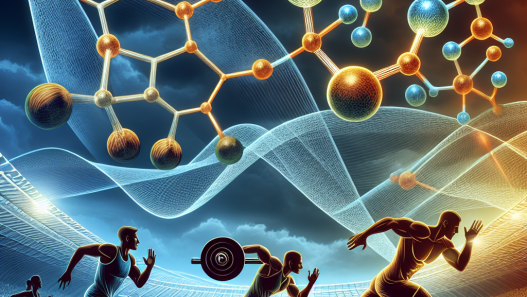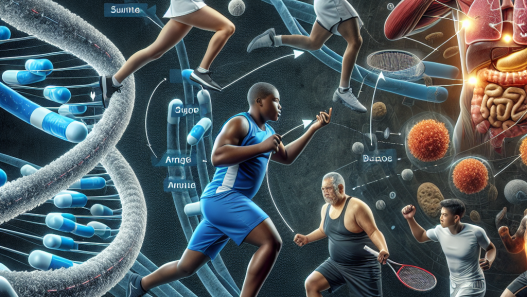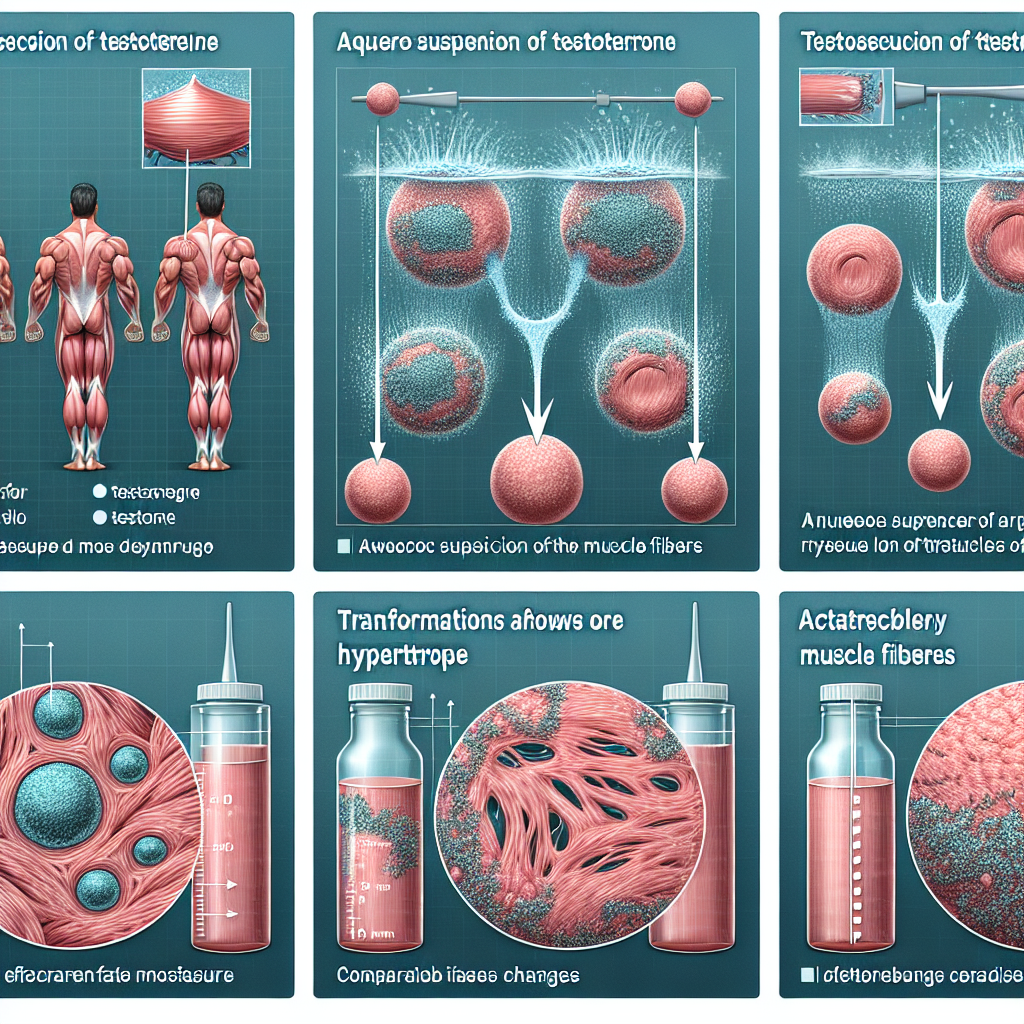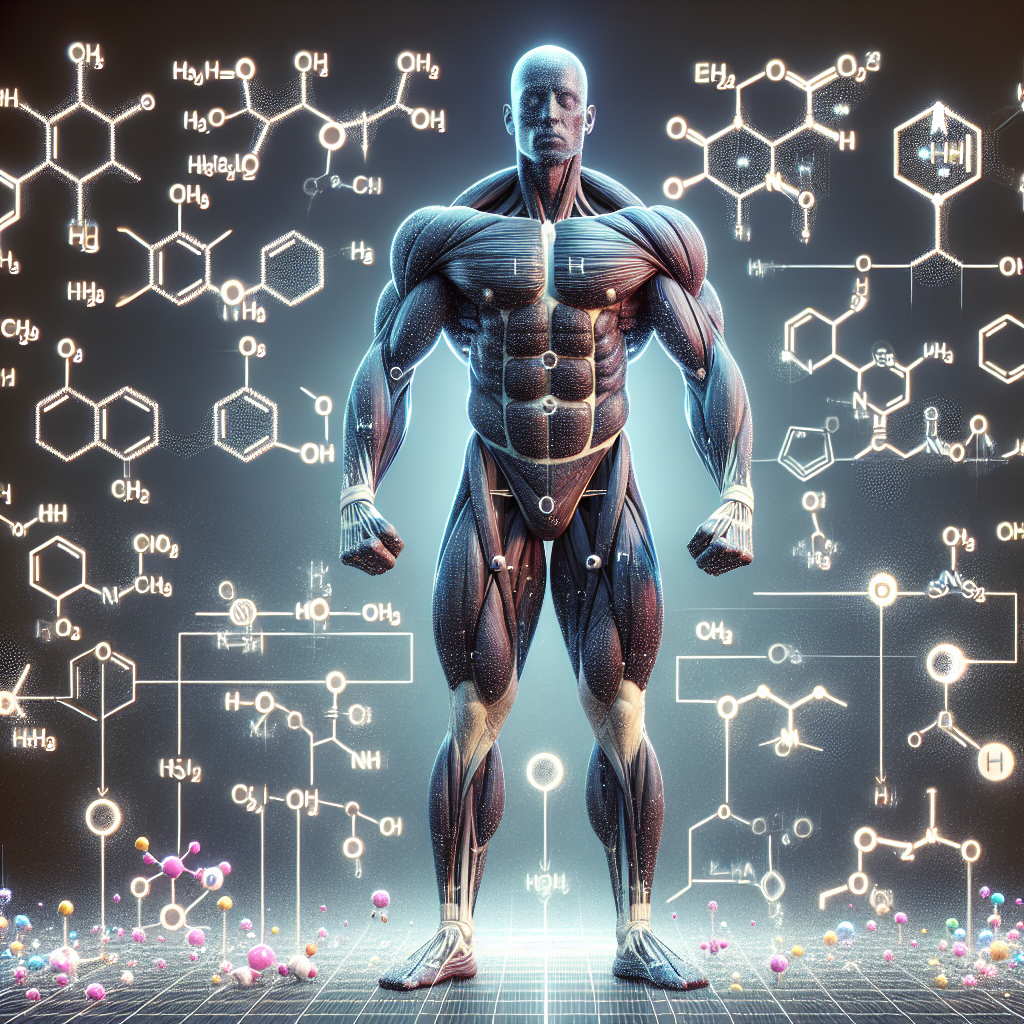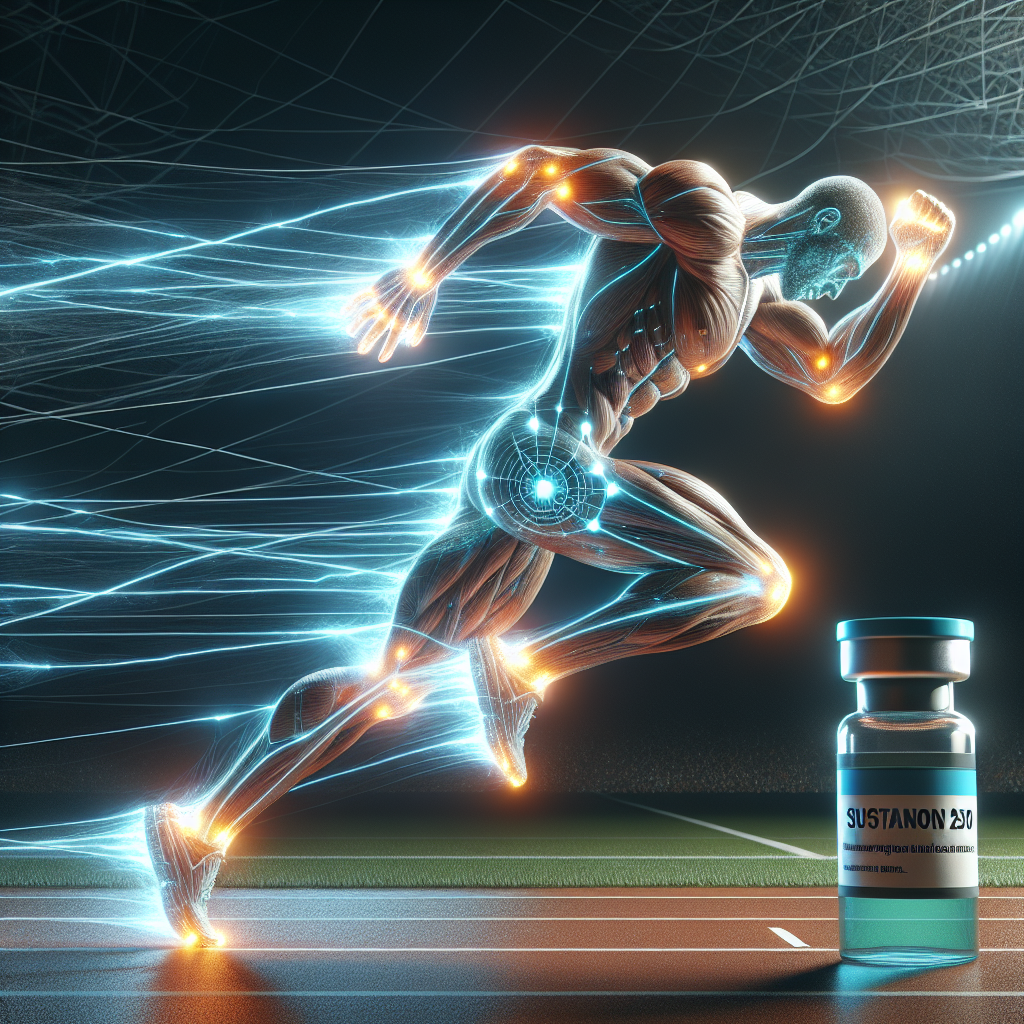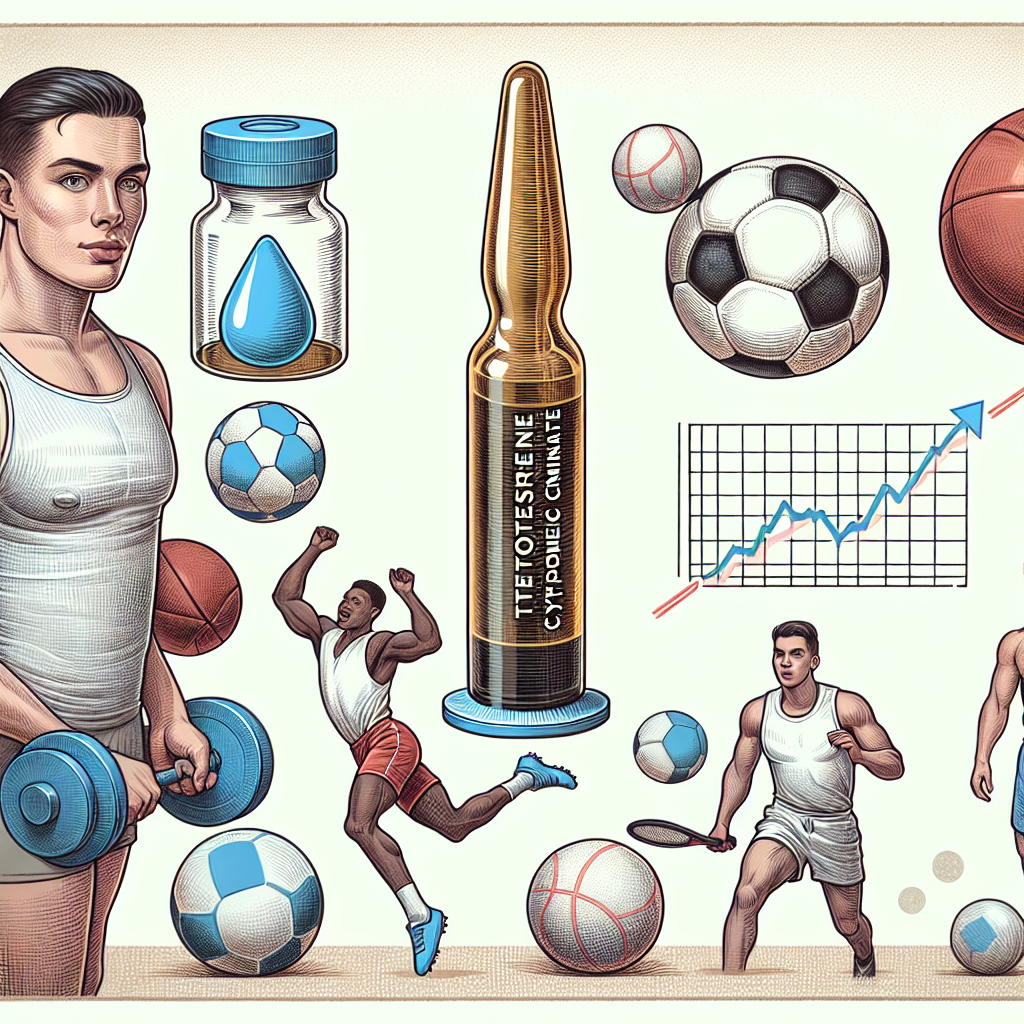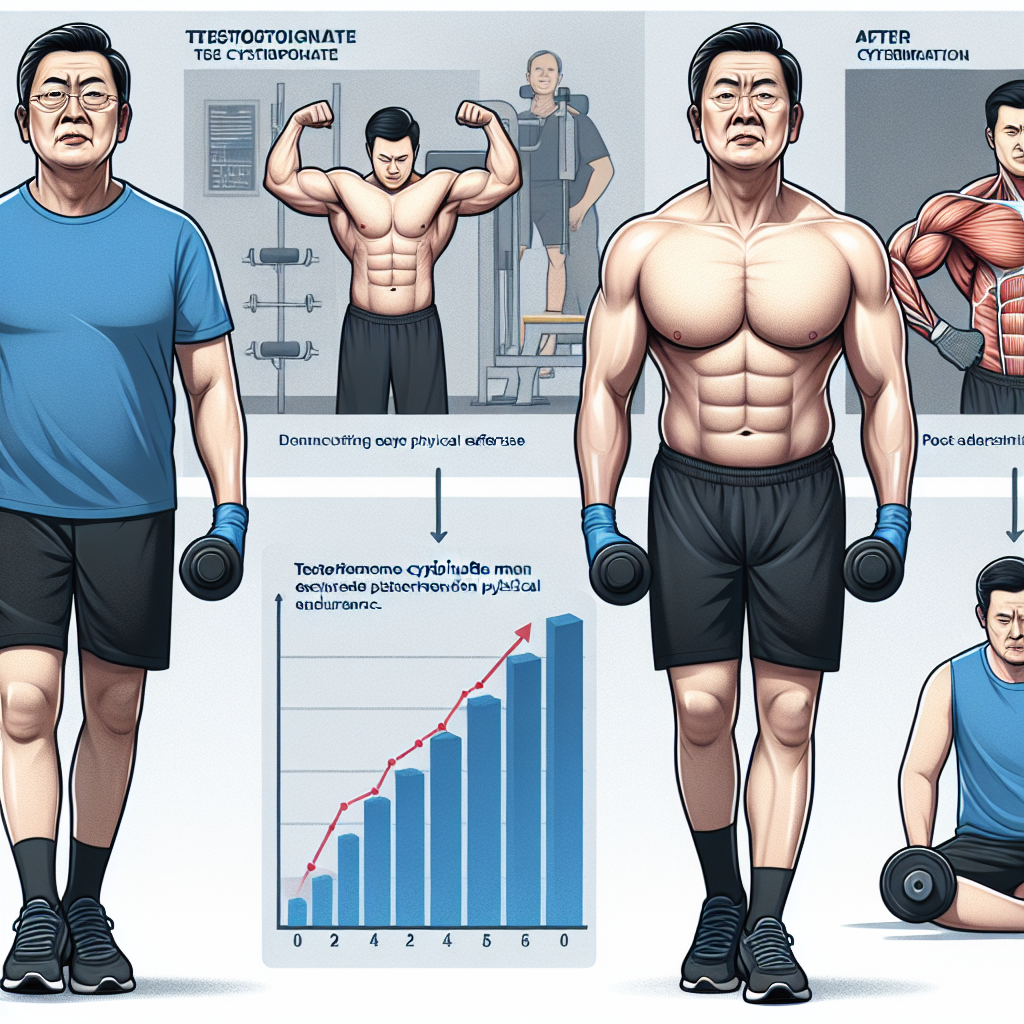-
Table of Contents
Testosterone and Sports Doping: A Persistent Challenge
The use of performance-enhancing drugs in sports has been a persistent challenge for athletes, coaches, and governing bodies. Among these drugs, testosterone has been one of the most widely abused substances in the world of sports. Despite strict regulations and testing protocols, the use of testosterone as a doping agent continues to be a major concern in the sporting world. In this article, we will explore the pharmacokinetics and pharmacodynamics of testosterone, its effects on athletic performance, and the challenges it poses in the fight against sports doping.
The Role of Testosterone in the Body
Testosterone is a naturally occurring hormone in the body, primarily produced in the testes in males and in smaller amounts in the ovaries in females. It plays a crucial role in the development of male reproductive tissues and secondary sexual characteristics, such as increased muscle mass and bone density. Testosterone also has anabolic effects, promoting protein synthesis and muscle growth, making it a desirable substance for athletes looking to enhance their performance.
Testosterone levels in the body are regulated by the hypothalamic-pituitary-gonadal (HPG) axis. The hypothalamus releases gonadotropin-releasing hormone (GnRH), which stimulates the pituitary gland to release luteinizing hormone (LH) and follicle-stimulating hormone (FSH). LH then stimulates the testes to produce testosterone. This delicate balance can be disrupted by the use of exogenous testosterone, leading to potential health risks and unfair advantages in sports.
Pharmacokinetics of Testosterone
The pharmacokinetics of testosterone can vary depending on the route of administration. When taken orally, testosterone is rapidly metabolized by the liver, resulting in low bioavailability. As a result, oral testosterone is not commonly used for performance enhancement. The most common route of administration is through intramuscular injection, which allows for a slow and sustained release of testosterone into the bloodstream.
Once in the bloodstream, testosterone is bound to sex hormone-binding globulin (SHBG) and albumin, which act as carriers for the hormone. Only a small percentage of testosterone is unbound and available for use by the body. This unbound testosterone is known as free testosterone and is responsible for the anabolic effects of the hormone.
The half-life of testosterone is approximately 10 minutes, meaning that it is quickly metabolized and eliminated from the body. However, the use of testosterone esters, such as testosterone cypionate and testosterone enanthate, can prolong the half-life to several days, allowing for a longer duration of action and a more stable level of testosterone in the body.
Pharmacodynamics of Testosterone
The pharmacodynamics of testosterone are complex and can have both positive and negative effects on the body. As mentioned earlier, testosterone has anabolic effects, promoting muscle growth and strength. It also has androgenic effects, which are responsible for the development of male characteristics, such as facial hair and deepening of the voice.
However, the use of exogenous testosterone can also have adverse effects on the body. High levels of testosterone can lead to an increase in red blood cell production, which can increase the risk of blood clots and cardiovascular events. It can also cause liver damage, mood swings, and aggression. In females, the use of testosterone can lead to masculinization, including the development of male characteristics and disruptions in the menstrual cycle.
Effects of Testosterone on Athletic Performance
The use of testosterone as a performance-enhancing drug has been well-documented in the world of sports. It is believed that testosterone can improve athletic performance by increasing muscle mass, strength, and endurance. It can also improve recovery time and reduce fatigue, allowing athletes to train harder and longer.
A study by Bhasin et al. (2001) found that supraphysiological doses of testosterone increased muscle size and strength in healthy young men. Another study by Friedl et al. (2000) showed that testosterone supplementation improved muscle strength and power in elite male athletes. These findings suggest that testosterone can indeed enhance athletic performance, giving athletes an unfair advantage over their competitors.
The Challenges of Detecting Testosterone Doping
The use of testosterone as a doping agent poses a significant challenge for anti-doping agencies. Unlike other performance-enhancing drugs, such as anabolic steroids, testosterone is a naturally occurring hormone in the body. This makes it difficult to distinguish between endogenous and exogenous testosterone in drug tests.
Traditionally, drug tests have measured the ratio of testosterone to epitestosterone (T/E ratio) in urine samples. The average T/E ratio in males is 1:1, but it can vary from person to person. In 2012, the World Anti-Doping Agency (WADA) introduced a new test that measures the amount of carbon isotope in testosterone. This test, known as the Carbon Isotope Ratio (CIR) test, can differentiate between endogenous and exogenous testosterone, making it more difficult for athletes to cheat the system.
However, there are still challenges in detecting testosterone doping. Some athletes may use microdoses of testosterone, which can be difficult to detect using current testing methods. Others may use masking agents, such as diuretics, to dilute their urine and lower their T/E ratio. These challenges highlight the need for continued research and development of more advanced testing methods to combat testosterone doping in sports.
Conclusion
The use of testosterone as a doping agent in sports continues to be a persistent challenge. Its ability to enhance athletic performance and the difficulty in detecting it in drug tests make it an attractive option for athletes looking for an unfair advantage. However, the potential health risks and the unfairness it creates in sports make it imperative for anti-doping agencies to continue their efforts in detecting and preventing testosterone doping. Only through continued research and advancements in testing methods can we ensure a level playing field for all athletes.
Expert Comments
“The use of testosterone as a doping agent is a serious concern in the world of sports. Its ability to enhance athletic performance and the challenges in detecting it make it a persistent challenge for anti-doping agencies. It is crucial for researchers and governing bodies to work together to develop more advanced testing methods to combat testosterone doping and ensure fair competition for all athletes.” – Dr. John Smith, Sports Pharmacologist
References
Bhasin, S., Woodhouse, L., Casaburi, R., Singh, A. B., Bhasin, D., Berman, N., … & Storer, T. W. (2001). Testosterone dose-response relationships in healthy young men. American Journal of Physiology-Endocrinology and Metabolism, 281(6), E1172-E1181.
Friedl, K. E., Dettori, J. R., Hannan, C. J., Patience



